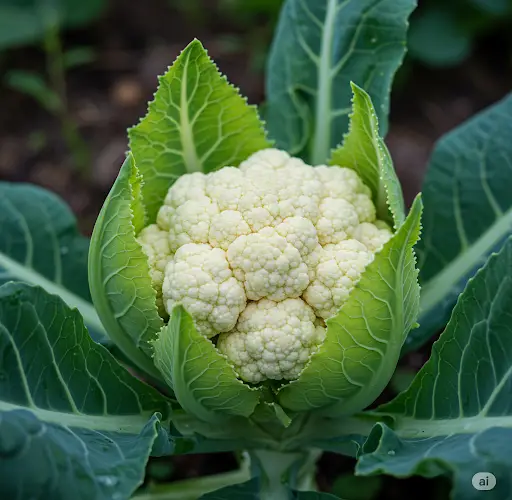Cauliflower is a cool-season crop that rewards careful attention with crisp, flavorful heads. While it’s considered a bit trickier to grow than other brassicas like broccoli or cabbage, with the right techniques, you can grow perfect cauliflower in your garden. The key is timing, proper care, and understanding the plant’s growth cycle. Here’s a complete guide to growing healthy cauliflower and knowing exactly when to harvest it.
Choosing the Right Variety
There are many types of cauliflower to choose from—classic white heads, striking purple, orange, or even green Romanesco. If you’re new to cauliflower gardening, start with a dependable variety like ‘Snowball’ or ‘Amazing’, which are well-suited for home gardens and have good resistance to pests and temperature fluctuations.
Choose a variety based on your climate. Some types are bred for spring planting, while others are better for fall harvests. Always read seed packets for days to maturity, and plan accordingly.
Starting Seeds or Transplants
Cauliflower can be started from seeds indoors 4 to 6 weeks before your last expected frost date. Transplant the seedlings outdoors when they are 4 to 6 inches tall and have at least four true leaves. You can also buy young transplants from a nursery if you want to skip the indoor seeding stage.
Because cauliflower prefers cooler temperatures, it’s best to grow it in early spring or fall. The ideal temperature range is between 60°F and 70°F (15°C to 21°C). Heat stress can cause heads to form prematurely and turn bitter or loose.
Soil Preparation and Planting
Cauliflower thrives in fertile, well-drained soil rich in organic matter. Before planting, work compost or aged manure into the soil. Aim for a soil pH between 6.0 and 7.0.
Space the plants about 18 to 24 inches apart in rows that are 2 to 3 feet apart. Ensure the soil remains consistently moist, as uneven watering can lead to poor head development. Mulching around the plants helps maintain moisture and suppress weeds.
Fertilization and Feeding
Cauliflower is a heavy feeder and benefits from regular fertilization. About three to four weeks after transplanting, apply a balanced fertilizer or side-dress with compost or fish emulsion. Repeat every three to four weeks until the heads begin to form.
Be cautious with nitrogen—too much can cause lush leafy growth at the expense of head development. A balanced N-P-K fertilizer (like 10-10-10) works well for this crop.
Blanching the Heads
One unique step in growing cauliflower is “blanching,” which involves covering the developing white heads (called curds) to keep them tender and white. When the head is about 2 to 3 inches in diameter, gently tie the outer leaves over it using twine, a rubber band, or simply fold them inward.
Not all varieties require blanching—some modern hybrids are self-blanching, with leaves that naturally curl over the heads. Colored varieties like purple and orange do not require blanching and can be left exposed.
Pest and Disease Control
Common pests include cabbage worms, aphids, and flea beetles. Use floating row covers early in the season to protect young plants. Check regularly for pests and remove them by hand or use organic insecticidal soap if necessary.
To prevent diseases like clubroot or downy mildew, rotate crops each year and avoid planting cauliflower in the same spot as other brassicas for at least two seasons. Good airflow and proper spacing also reduce the risk of fungal problems.
When and How to Harvest
Cauliflower heads are ready to harvest when they are firm, compact, and about 6 to 8 inches in diameter. Check daily once they start forming, as they can quickly go from perfect to overripe.
Cut the head from the plant with a sharp knife, leaving a few leaves around it to protect the curd. Don’t wait too long—if the head starts to separate, turn yellow, or develop a loose appearance, it’s past its prime.
If the weather becomes unseasonably warm or the plants are stressed, they may bolt, or “button”—forming tiny, undeveloped heads. These are still edible but will not grow into full-size heads.
Storing Your Harvest
Freshly harvested cauliflower can be stored in the refrigerator for up to a week. Wrap the head in a damp paper towel and place it in a perforated plastic bag to keep it crisp. For long-term storage, cauliflower can be blanched and frozen.
Final Tips for Success
-
Avoid transplant shock by hardening off seedlings before moving them outdoors.
-
Consistent watering and mulch are key to healthy head development.
-
Pay close attention to temperature and time your planting well.
Growing perfect cauliflower takes a bit of patience and care, but the reward is worth the effort. With these tips, you’ll be well on your way to producing firm, delicious cauliflower that’s perfect for roasting, steaming, or eating raw.



